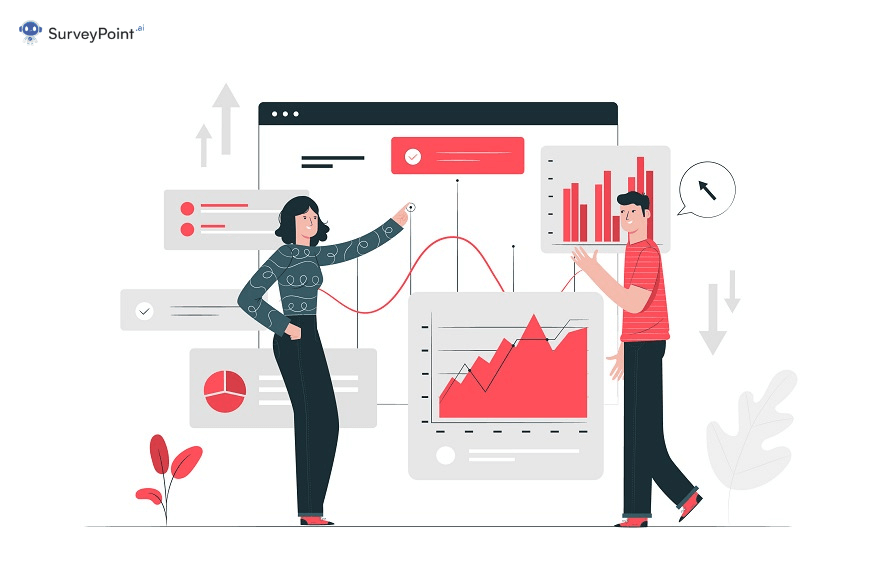
With data analysis, it is possible to tap into specific insights to ease your decision-making process. Data analysis is a whole other process, from cleaning the data to analyzing it. And one of the best ways to analyze data is through an Exploratory Data Analysis (EDA).
EDA is an analysis technique that allows researchers to screen the data and make better decisions for real-time situations. This blog will offer an in-depth walkthrough of EDA and how it can help data scientists formulate stunning decision-making patterns.
Understanding Exploratory Data Analysis
Exploratory Data Analysis, or EDA, is one technique that relies on Artificial intelligence (AI) to extract essential insights from a data set. It has been around since the 1970s and is considered to be a landmark technique. By determining whether statistical methods are appropriate, it goes beyond hypothesis testing.
In short, it investigates the data, analyzes it and weeds out any characteristics that are not actually required. It is conducted before the conclusion and allows the professionals to manipulate their data set and get to the answer.
Importance Of EDA In Data Science
One of the primary agendas of EDA is to discover every aspect of data before making any assumptions. The technique is laid only on practical grounds, which helps you identify threats and errors.
Exploratory Data Analysis can help you identify the conclusion and its application use cases to reach the desired goals in data science. A further gain is that it gives your stakeholders confidence that your choices are sensible and sound. Moreover, EDA is useful for locating the standard deviation and other fine-grained statistical parameters, such as the margin of error.
As a final step in EDA, you can further analyze the identified features by using machine learning.
Here’s a list of objectives covered by EDA:
- It identifies and weeds out data outliers.
- Through it, you can tap into trends.
- You can use it to discover patterns among your target audience.
- It uses experiments to create a hypothesis.
- It enables you to identify new data sources.
Step-By-Step Walkthrough Of EDA
To conduct an EDA, here are some core steps:
Data Collection
To start with Exploratory Data Analysis, you must collect the data. Though data based on every life experience is readily accessible, you must identify the right platform for collecting data. You can conduct polls and surveys and access secondary data.
Identifying & Understanding Variables
This one is perhaps the most crucial step for EDA. Variables or values in your data are constantly changing. So, you must identify such variables and study them. Analyze how they affect specific patterns.
Filtering Out The Null Values
The next step is to clean your data set by removing variables with a null value. For instance, if you conducted a survey, you can remove incomplete or inappropriate responses.
This will not only help you reduce your time but will also help you pre-process issues such as null values and anomaly detection.
Identify The Correlation Between 2 Variables
Once you are ready with your manipulated dataset, you must start by finding correlated variables. Finding a relationship between two variables can help determine how certain patterns work.
Choose A Statistical Model
You can use different statistical measures depending on the data type, size, variables, and primary analysis objective.
These measures are readily available and can be applied. As a result of this technique, you can better comprehend the information you gathered.
Visualize & Analyze Results
Once you are through with statistical analysis, you must observe the data. Look out for data trends and correlating variables that can help you gain insight. Additionally, your analytical technique must be well-honed.
RELATED: Popular Data Collection Methods To Draw Meaningful Conclusions
Types Of Exploratory Data Analysis
EDA is usually of three types:
- Univariate – The conclusion is based on a single variable during univariate analysis. As a result, there is no correlation between the variables. For instance, a dataset shows product production for 12 months.
- Bivariate – In a bivariate analysis, the outcome usually depends upon two variables with a cause-and-effect relationship. For example, a household’s income might affect a family’s spending habits.
- Multivariate – In the case of multivariate analysis, the outcome is based on more than two variables. Like, selling a particular product can depend upon a customer’s income, discounts, and competition.
Based on the analysis results, summary statistics can be displayed numerically or categorically. These types of EDA can further be divided into non-graphical and graphical analyses.
Here’s a brief on the different kinds of EDA:
1. Univariate Non-Graphical Analysis
Univariate non-graphical analysis refers to the statistical analysis of a single variable without visual aids such as graphs or charts. This type of analysis typically involves the calculation of summary statistics such as mean, median, mode, range, standard deviation, and variance.
Characteristics of a single variable, such as its mean, standard deviation, and distribution, can be described and summarised using univariate analysis that does not use graphs. A normalcy test, missing value identification, and the detection of outliers are also possible applications.
Examples: Calculating a group’s average age or determining the salary range for a particular occupation.
2. Univariate Graphical Analysis
The univariate graphical analysis uses visual aids to analyze a single variable. It involves creating graphs and charts to visualize the data’s distribution, central tendency, and variability.
Histograms are a commonly used tool for univariate graphical analysis. They display the data distribution by showing the frequency of values within specific intervals, called bins. Box plots, conversely, offer the data’s median, quartiles, and outliers, providing information about the data’s central tendency and variability.
Density plots show the probability density of the data, allowing for a more detailed view of the distribution.
3. Multivariate Non-Graphical Analysis
An analysis of multiple variables using non-graphical methods involves a multivariate statistical approach.
This type of analysis uses statistical techniques such as regression, correlation, and principal component analysis to identify patterns and relationships between variables.
For purposes of both prediction and hypothesis testing, multivariate non-graphical analysis can be a useful tool.
Examples: Examining the relationship between income, education, and occupation or identifying the factors influencing customer satisfaction in a survey.
4. Multivariate Graphical Analysis
The multivariate graphical analysis uses visual aids to explore relationships between multiple variables. It involves creating graphs and charts that display the relation between two/more variables in a single image.
Some common types of multivariate graphical analysis include:
- Scatter plot: It is a graph that displays the relationship between two variables by plotting one against the other. A dot represents each data point, and the pattern of dots can reveal the strength and direction of the relationship between the variables.
- Run chart: This chart is a line graph displaying changes in a variable over time. It can identify trends, patterns, and shifts in the data.
- Bubble chart: A bubble chart is a scatter plot chart that includes a third variable, typically represented by the size of the bubbles. The scatter plot can assist in uncovering patterns and trends that are difficult to see in a two-dimensional plot.
- Heat map: This is a graphical representation of data where different colors represent the values. Visualizes multiple variables in a single image, revealing patterns and trends that are hard to identify using other graphs.
Summing It Up
In conclusion, exploratory data analysis (EDA) is a critical first step in any data analysis project. By combining graphical and non-graphical techniques, analysts can deeply understand their data, identify patterns and trends, and develop hypotheses for further testing.
EDA is an iterative process that involves generating and testing hypotheses, refining visualizations, and exploring the data from multiple angles. It is a powerful tool for generating insights and identifying areas for further investigation.
However, it is essential to remember that EDA is just one part of a more extensive data analysis process. Further analyses may be required after initial insights are generated to test hypotheses, validate findings, and develop predictive models.
Frequently Asked Questions
Q1. How do I get better at exploratory data analysis?
Improve your skills in exploratory data analysis through consistent practise, the use of multiple methods, and the incorporation of constructive criticism.
Pay attention to the data and its trends; employ visualisations and statistical analysis to learn more. Maintain a systematic approach to analysis, document your findings, and don’t be afraid to try out new methods to see which ones perform best with your data.
Q2: Can you tell me how many different kinds of EDA there are?
The four main categories:
- Univariate non-graphical
- Multivariate non-graphical
- Univariate graphical
- Multivariate graphical
Ready To Future-Proof Your Business?
Sign-up for a FREE account and get a sneak peek into our intuitive survey dashboard panel.
Free Trial • No Payment Details Required • Cancel Anytime




